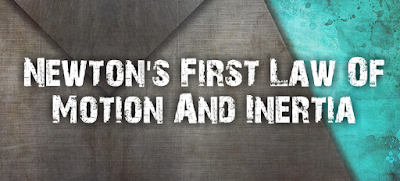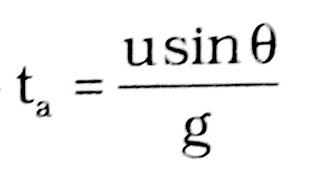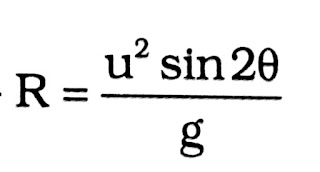Wednesday 9 January 2019
Tuesday 8 January 2019
Apparent Weight In Lift
Apparent weight:
" When a body moves or accelerate in the opposite direction of gravity or along the direction of gravity then the body weight appears to change, this resulted weight of the body is known as Apparent weight. "
➡The gravitational force nothing but the force of attraction exerted by the Earth on the body of mass m.
➡Weight of the body is referred as the gravitational force acting on a body.
➡ W = mg
Apparent weight of a body in lift:
➡3 conditions are considered for the Apparent weight of a body in lift.
➡1. When the lift is at rest( acceleration is zero/ uniform velocity)
➡2. When the lift accelerates upwards
➡3. When the lift accelerates downwards
1. When the lift is at rest:
➡Consider an object in a lift which is at rest or moving upwards and downwards with uniform velocity.
➡Since the lift is at rest or at uniform velocity, its acceleration will be zero.
➡Therefore the Apparent weight of an object is equal to its actual weight.
➡W1 = R = mg
2. When the lift accelerates upwards:
➡Consider an object of mass m in a lift which is moving upwards with uniform acceleration a
➡Since it is moving upwards it's floor pushes the object with the same acceleration.
➡Therefore excess force appears to occur on the object which is not the floor.
➡The Apparent weight will be greater than the actual weight.
➡ W1 = m(g + a)
3. When did lift accelerates downwards:
➡a. When the lift move downwards with acceleration a which is less than the acceleration due to gravity g then the object accelerates downloads by taking a part of force of gravity as its acceleration to move downwards.
➡Therefore Apparent weight will be less than that of the actual weight.
➡W1 = m(g - a)
➡b. When the lift moves downward with an acceleration greater than that of acceleration due to gravity.
➡Then the Apparent weight of the object will be negative.
➡The object will be staying at the ceiling of the lift.
➡W1 = m(g - a) = negative.
➡c. When the lift is free falling, then the acceleration of the lift is equal to acceleration due to gravity (a = g).
➡At free falling, the object will be experiencing a state of weightlessness.
➡W1 = m(g -a) = m(g - g) = 0
Motion And Its Kinds
Motion:
" When the body position changes with respect to its surrounding and time, then the body is said to be in Motion. "
Kinds Of Motion:
There are 8 different kinds of motion.
1. Translatory motion
2. Circular motion
3. Oscillatory motion
4. Vibratory motion
5. Repetitive motion
6. Periodic motion
7. Multiple motion
8. Random motion
➡1. Translatory motion:
When all the particles of a body moves in the direction of motion, then that motion is known as Translatory motion.
➡Translatory motions are of two types.
a. Rectilinear motion
b. Curvilinear motion
➡a. Rectilinear motion:
When an object moves along a straight line then its motion is known as rectilinear motion.
Example- free falling bodies.
➡b. Curvilinear motion:
When an object moves along a curved path then its motion is known as curvilinear motion.
Example- vehicles moving along a curved path.
➡2. Circular motion:
When an object moves in a circle then its motion is known as circular motion.
Circular motion is of two types
➡a. Rotatory motion
➡b. Revolutionary motion
➡a. Rotatory motion:
When an object without changing its position moves in a circular path then that motion is known as rotatory motion.
➡b. Revolutionary motion:
When a body changes its position while moving in a circular path then that motion is known as Revolutionary motion.
➡3. Oscillatory motion:
When an object
moves to and fro or back and forth along the same path then the motion is known as oscillatory motion.
➡4. Vibratory motion:
Vibratory motion is similar to oscillatory motion. Here the object moves either in to and fro motion or in back and forth along with that the moving object undergoes change in shape or size is known as vibratory motion.
➡5. Repetitive motion:
When the object which is in motion repeats itself after certain interval of time then such motion is known as repetitive motion.
➡6. Periodic motion:
A repetitive motion, where the motion repeats itself after a fixed interval of time is known as periodic motion.
➡7. Multiple motion:
When an object processes two or more motion at the same time such motion is known as multiple motion.
➡8. Random motion:
When the motion of a body suddenly changes from one kind to another kind then such motion of a body is known as random motion.
Monday 7 January 2019
Newton's Second Law Of Motion And Momentum
Momentum:
"Momentum is simply defined as mass in motion or when a force is applied on an object of mass M then the object changes its position in the direction of force."
➡Momentum = mass X velocity
Newton's second law of motion:
" Newton's second law of motion is defined as the rate of change of momentum is directly proportional to the net force acting on an object and takes place in the direction of net force. "
➡Derivation of F = ma
Consider an object of mass m having an initial velocity u.
Therefore its initial momentum is p1 = mu
Let the final velocity of an object is v
Therefore its final Momentum is p2 = mv
Change in momentum = p2 - p1
Rate of change of momentum
= p2 - p1/Δt
= mv - mu /Δ t
= m(v - u)/Δ t
= mΔv / Δ t
From Newton's second law of motion,
F ∝ mΔv/Δt
Since acceleration a = Δv/Δt
F ∝ ma
F = k ma
When unit of force is considered acting on a unit mass then concept of proportionality K is equals to 1
F = ma
Newton's First Law Of Motion And Inertia

Newton's first law of motion:
"Newton's first law of motion states that everybody remains in the state of rest or in uniform motion until and unless it is compelled change its state by an external force."
Factors of Newton's first law of motion:
Newton's first law of motion depends on two factors,
➡1. There should be an external force which is required to move/ accelerate a body.
➡2. A body cannot change its State of rest or of uniform motion on its own until a force is applied which leads to a concept called as Inertia.
Inertia:
"A tendency of a body to remain in its state of rest or of uniform motion i.e a body will be always in rest if it is at rest position and a body will be always in motion if it is at motion."
➡Inertia body depends on the mass of the body.
➡Inertia ∝ Mass of the body
➡Greater the mass higher the inertia, lesser the mass lower the inertia.
➡There are three types of inertia.
1. Inertia of rest
2. Inertia of motion
3. Inertia of direction
➡1. Inertia of rest:
Inertia of rest is defined as the resistance of a body to change its state of rest.
➡2. Inertia of motion:
Inertia of motion is defined as the tendency of a body to continue its motion in the direction of force.
➡3. Inertia of direction:
Inertia of direction is defined as the direction of a body with respect to the direction of the applied force.
Friday 4 January 2019
Projectile Of Motion And It's Parameters
"An object moving with some velocity into the air at an angle 90 degrees with horizontal plane is known as Projectile."
➡Velocity an object has two components, one is horizontal component and other one is vertical component.
➡The path of an object which moves in the air in the form of a parabola is called as Trajectory.
➡A projectile has two dimensional motion, one is horizontal dimensional motion and other one is vertical dimensional motion.
➡Uniform velocity along the horizontal direction.
➡Uniform acceleration calendar vertical direction.
➡Acceleration is zero along horizontal direction.
Parameters Of Projectile:
There are 5 parameters of projectile.
1. Maximum height
2. Time of ascent
3. Time of flight
4. Horizontal range
5. Maximum range
➡1. Maximum height( Hmax):
The height at which the vertical component of the velocity becomes zero of a projectile is called as maximum height.
➡2. Time of ascent (ta):
Time taken by the projectile to reach the maximum height is known as time of ascent.
➡3. Time of flight(T):
Sum of the time of Ascent and time of Descent of a projector is known as time of flight.
➡4. Horizontal range(R):
From point of projection, the horizontal distance covered by the projectile is known as horizontal range.
➡5. Maximum range(Rm):
If the Angle of projection is 45 degrees, then the horizontal range will become maximum, this is known as maximum range.
Thursday 3 January 2019
Defects In Voltaic Cell
There are two defects in voltaic cell.
1. Local action
2. Polarization
1. Local action:
➡Zinc plate contains carbon and iron particles as impurities.
➡These impurities react with acid present in the voltaic cell and along with zinc particles to form tiny cells creating a local electric circuits known as local action.
➡Usually zinc plate are coated with Mercury to prevent this local action.
➡This Mercury prevent the impurities to come in direct contact with acid to form the local action.
2. Polarization:
➡As the current passes through this cell, the zinc plate start dissolving in the acid to form hydrogen bubbles.
➡This hydrogen Bubbles move towards the copper plate and resist flow of current. This is known as polarization.
➡Depolarisers are used to reduce this polarization.
➡Oxidizing agents act as depolarizer which reacts with hydrogen Bubbles and this converts into water.
➡Usually potassium dichromate, manganese dioxide, copper sulphate are used as depolarizers.
Wednesday 2 January 2019
Length And Its Measurements
Length:
"The distance between two fixed points is known as Length."
➡SI unit of length is metre
Measurements
➡Light year:
➡Distance travelled by light in one year is known as light year.
➡One light year is equal to 9.46 x 1015 m.
➡Astronomical unit( A.U):
➡The distance between the Earth and the Sun is known as astronomical unit.
➡One astronomical unit is equal to 1.496 x 10 ^ 11 metre
➡Parallactic second( parsec):
➡Parallactic Second is the biggest unit of distance.
➡It is equal to 3.26 times of the light year.
➡1 parsec is equals to 3.08 x 10 ^ 16 m
➡Femtometer( Fermi):
➡Femtometer is the smallest unit of distance.
➡1 Fermi is equals to 10 ^ - 15 m
➡Least count:
➡Least count is the smallest quantity that can be measured accurately.
➡Least count is equal to 1 mm( on regular scale).
➡Curved object:
➡Length of a curved object is measured using a thread, then this thread is spread along the side of a regular measuring scale.
Subscribe to:
Posts (Atom)


















